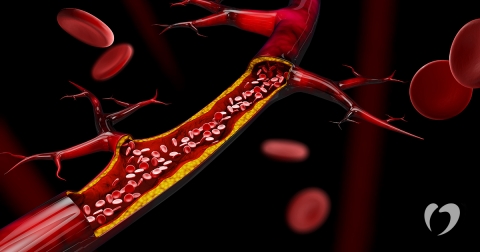Coronary Heart Disease (Coronary Artery Disease)

Heart disease has been the leading cause of death in Americans for both men and women for around 90 years. One in four deaths in the United States is due to heart disease of some kind. Coronary heart disease, also called coronary artery disease, is the most common type and accounts for half of those deaths.
What is coronary heart disease and what causes it?
Coronary heart disease (CHD) is caused by a specific type of arteriosclerosis, or hardening of the arteries, called atherosclerosis. Atherosclerosis is the buildup of plaque, or masses of cells, cholesterol and lipids covered in a white fibrous coating. This is a degenerative disorder that injures the inner wall and narrows the artery.
CHD occurs when the atherosclerosis affects the arteries that supply blood to the heart. Restricted blood starves the heart muscle of oxygen, especially when beating hard due to stress or exercise. The narrowed vessel might develop new vessels to go around blockages, but with stress, the heart might not get enough oxygen.
In this state, plaque can break away from the artery wall and block blood flow to the heart or brain, which can cause a heart attack or stroke.
There are many risk factors to CHD and atherosclerosis, some of which are controllable and some not. Genetic factors (age, gender, heredity, ethnicity) cannot be controlled, while lifestyle factors (smoking, weight, diabetes, high blood pressure/cholesterol, lack of exercise, high stress, depression) can be managed.
Symptoms and diagnosis
Atherosclerosis develops over many years, sometimes starting from a young age, and people often have no symptoms until CHD has developed.
CHD’s primary symptom is angina, which may feel like heaviness, pressure, aching, burning, numbness, fullness, squeezing or pain. This sensation is most often in the center or left chest but can also be in the shoulder, arm, neck, back or jaw.
Women may have subtler symptoms, including nausea, sweating, fatigue, sleep issues, indigestion, anxiety or shortness of breath along with chest pressure.
Other symptoms could include palpitations (fast or irregular heartbeats), weakness or dizziness.
To diagnose coronary heart disease, your doctor will discuss your symptoms, review your medical history and risk factors and conduct a physical exam. They may also order various tests to evaluate your heart and cardiovascular system overall. Tests may include electrocardiogram (ECG/EKG), echocardiogram, stress tests, cardiac catheterization, and CT coronary angiography.
Treatment
Treatment of coronary heart disease can increase the blood supply to the heart, but it does not cure coronary heart disease. The most effective efforts are preventative based on the manageable risk factors. Potential treatments include:
- Lifestyle changes, including quitting smoking, a better diet (low saturated fat, salt, sugar, cholesterol), increased exercise, and healthy weight maintenance.
- Medication, such as aspirin and a statin medication and potentially others that lower the workload of the heart, relax vessels, lower cholesterol, prevent clot formation and lower the risk of heart attack.
- Surgical procedures such as angiogram to show blockages and determine needed meds, angioplasty to open passages with a balloon, placement of stents to hold open the artery, bypass surgery to attach new arteries or go around blockages, or an endarterectomy to surgically remove plaque from the arteries.
If you have a family history of coronary heart disease or atherosclerosis, are a smoker, have high blood pressure, or have high cholesterol, contact the Oklahoma Heart Hospital today to schedule an appointment to discuss your risk factors for heart disease.




